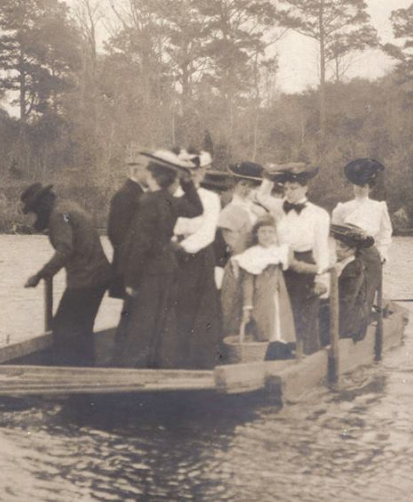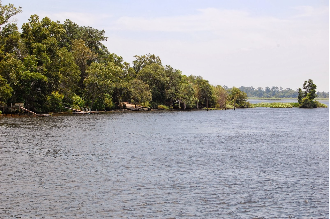THE LOST VILLAGE OF CHILDSBURY
This essay is adapted from Lost Charleston. We visit lost village of Childsbury on our Day on the Cooper River Tour.
Few traces of Charles Town’s first planned inland settlement remain, though archaeologists and SCUBA divers occasionally pull up artifacts recalling John Childs’ great, failed endeavor. An early settler, Childs was granted 1,200 acres known as Strawberry along the West Branch of the Cooper River in 1698. Here he established a ferry where the river became too shallow for large ocean-going ships to continue upriver.
Yet Childs had bigger ambitions, adding 1,500 acres to his property over the next decade. By 1707 he had published plans for a new community named Childsbury, with 182 residential lots laid out in traditional squares and streets 66 feet wide. He set aside 600 acres for a communal farm and another 100 on a hill for a fort to protect the village from marauders.
By the time Childs died c. 1720, he had sold many of the lots, and plans for the public facilities were well underway. Strawberry Chapel, completed in 1725, was a fine structure that, unlike other chapels (i.e., Anglican “satellite” houses of worship offering services under the auspices of a parish church), was allowed to perform baptisms and funerals. The Commons House of Assembly established market days on all Tuesdays and Saturdays, along with annual fairs in May and October. A “free school” was completed by 1733, along with a tavern, racetrack and shops for a tanner, butcher, shoemaker and carpenters.
By the 1730s, however, Charles Town’s economic base was shifting from trade with Native Americans to the development of its great antebellum plantation society. Plantations, by definition self-sustaining, usually had their own riverside docks, eliminating the need for a central shipping point such as Strawberry Ferry. Skilled enslaved laborers on the plantations supplanted the need for Childsbury’s artisans. Small farmers and tradesmen could not compete.
By 1750, Childsbury had been absorbed into a nearby plantation, though the chapel and tavern remained in use. Semiannual fairs and horse races continued until the mid-1750s, but by the time of the American Revolution, Childsbury no longer existed.
The only visible remains of the village today is Strawberry Chapel, which is privately owned and not open to the public, though services are held several times a year. One of the Lowcountry's most well-circulated ghost story, that of Miss Catherine Chicken, is set in this churchyard. The village bluff is a state heritage preserve, rarely visited except by ardent fishermen and archaeologists.


John Child's plan for his village as drawn by 1707.


